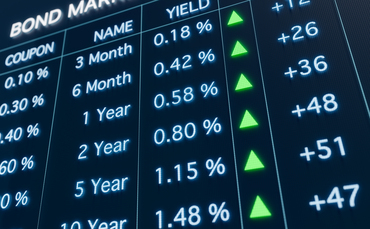But now that it appears the hiking cycle may be nearing its end - as signalled by both the Federal Reserve and Bank of England - ‘junk bonds' have started to look less attractive.
Deep Dive: Funds-of-funds can help overcome PE investment barriers
Nathan Sweeney, CIO of multi-asset at Marlborough, said the company is reducing its exposure to high yield bonds "after a strong run over the past year".
Although it had no exposure to high yield over the first half of 2022, "last summer we saw an attractive entry point after spreads over government bonds reached 600 basis points". He noted high yield bonds had "sold off sharply in a period of high inflation, rising interest rates and economic uncertainty".
But since then, Sweeney argued the pressure on junk bonds has eased, due to signals and investor belief that the hiking cycle has peaked and will end soon.
He added: "Credit spreads have narrowed and, as yields have fallen, high yield bond prices have risen, which has delivered a healthy return. In broad terms, we are now looking at a high yield premium of around 380bps over government bonds, which is a comparatively tight spread relative to history. Since April, we have also seen a pickup in the number of high yield bonds being issued, compared to low levels last year.
"This all means there is less potential for upside and, at the same time, we are seeing default rates ticking up. So, we have taken the decision to lock in some of our profits and move to an underweight position in high yield. In our view, the most interesting opportunity in fixed income now lies in long-duration bonds. We believe interest rates have peaked or are close to their peak, which in our view means the income paid on longer-dated bonds is looking attractive once more."
Bob Tannahill, portfolio manager at Ravenscroft, said the interesting part of ‘junk bonds' arises when the "market is willing to sell them at really attractive prices".
"Another aspect of high yield bonds is that liquidity is not as good as other bond asset classes, although it has improved over time," Tannahill added. "It can be particularly poor around periods of acute market stress such as the 2020 Covid crisis, which can cause prices to ‘gap down' as sellers find the only buyers as opportunists who want to buy at prices well below fair value for the conditions. This means investors need to be conscious that high yield can draw down fairly hard and that their ability to nimbly get into and out of individual bonds may be limited."
The Japanese case study
However, Katsutoshi Inadome, senior strategist at SuMi trust, noted Japan has had the opposite experience when it comes to high yield bonds, as they are currently missing from the market due to the Bank of Japan's "ultra-easy monetary policy".
He noted change may be afoot in the country, after BoJ governor Kazuo Ueda hinted at a possible departure from the central bank's dovish stance, as the monetary policy committee voted to increase the 10-year Japanese government bond trading band from 0.5% to 1%.
Inadome continued: "However, it is still uncertain to what extent the BoJ will move away from its yield curve control policy", despite not shying away from "controlling rising long-term interest rates since the policy change in July".
"Governor Ueda remains adamant that the BOJ's 2% inflation target must be met before any wholesale policy change, and [he] will be conscious not to spook markets."
Deep Dive: Governments' 'lack of financial discipline' could upset bonds' positive outlook
For investors looking to tap into high yield bonds, Marlborough's Sweeney said they can act as a "useful diversifier" in portfolio as they can work as a proxy for equity market exposure, but with "broadly lower volatility".
More specifically, Ravenscroft's Tannahill pointed to active managers in the space due to junk bonds' liquidity constraints, especially considering how several ETFs have struggled to "keep up with their indices once the realities of trading are fully factored in".
A strategy of note for him was the Candriam Bonds Global High Yield fund, due to the team's willingness to lean into and away from credit beta to a "much greater degree than many index-centric funds".
He also highlighted the short duration space as an area of opportunity, as it "tends to carry the majority of the spread of their full duration equivalents", while carrying a "much lower proportion of the default risk".
For this space, Tannahill's highlighted the Schroder Strategic Credit fund, due to its track record of "harvesting most of the spread of high yield while keeping default losses very low even in the difficult stages of the economic cycle".


